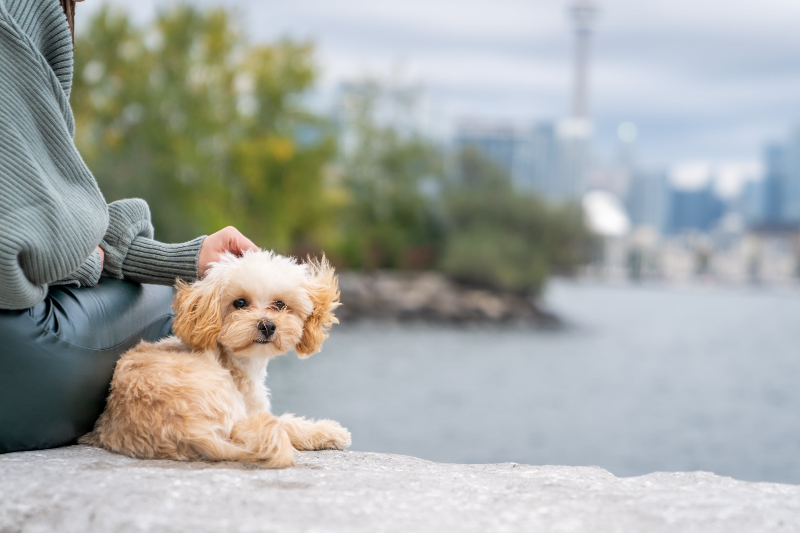Embarking on Dog Ownership: Compatibility with Children or Other Pets as a Crucial Consideration
Steps to Choosing the Right Dog for Your Home with Children & Other Pets
Bringing a dog into a home with children and other pets requires thoughtful consideration to ensure harmony and happiness for everyone. Choosing a dog that isn’t a good match for your family and pets can lead to various challenges, some of which can significantly impact the well-being of your household, existing pets, and the new dog. Below is a step-by-step guide to help you choose the perfect companion:
First, what can go wrong if you choose the wrong dog?
Failing to choose the right dog for your family and existing pets can lead to safety risks, emotional stress, financial strain, and potential heartbreak for everyone involved. Returning or rehoming a dog can be heartbreaking for both the family and the dog. Further, a rehomed dog may experience trauma, making it even harder for them to adjust to their next family. A thoughtful, informed approach to selecting a dog ensures a happy and harmonious home for all.
1. Assess Your Current Household Dynamics
-
Understand Your Children's Needs: Consider your children’s ages, energy levels, and ability to interact responsibly with a dog. Younger kids may need a calm, tolerant dog, while older children might enjoy a more energetic breed.
-
Evaluate Your Other Pets: Consider the species, temperament, and energy levels of your existing pets. A cat may prefer a dog with a lower prey drive, while an active dog might match well with another playful canine.
2. Research Dog Breeds - Make use of Paction’s Dog Breed Matchmaker
-
Temperament: Look for breeds known for being good with children (e.g., Golden Retrievers, Labradors, Beagles) or friendly with other animals (e.g., Collies, Spaniels).
-
Energy Levels: Match the dog's activity level with your household’s lifestyle. High-energy breeds need more exercise and may not suit homes with quieter pets.
-
Size and Strength: Ensure the dog’s size is manageable for your children and doesn’t overwhelm smaller pets.
3. What to Consider Adopting from a Rescue or Shelter
-
Many shelters assess dogs for compatibility with children and other pets. Ask about the dog's history and temperament. Be persistent about getting a consistent answer from staff as stories about a dog’s past might suffer from “broken telephone”.
-
Ask the staff about:
-
The dog’s temperament.
-
History with children or other pets.
-
Any known behavioral issues or training needs.
-
Spend time with the dog at the shelter to observe its reactions to children and other animals.
4. Prioritize Individual Personality Over Breed
-
While breed traits are a helpful guide, individual dogs have unique personalities. Look for a dog that matches your family dynamic regardless of breed.
-
Ask about the dog’s socialization history and behavior around kids and pets.
5. Meet the Dog First
-
Arrange a meet-and-greet with the dog in a neutral environment. Bring your children to see how they interact.
-
If you have another dog, introduce them in a controlled setting to observe their compatibility. For cats, ask for a trial period or plan for a gradual introduction.
6. Prepare Your Home & Gradually Introduce the Dog
-
Set up a safe space for the new dog to retreat to when they feel overwhelmed.
-
Secure separate feeding and sleeping areas for your current pets to avoid territorial disputes.
-
Children: Teach kids how to interact respectfully with the new dog, emphasizing gentle play and avoiding overwhelming the animal. Introduce the dog to your existing pets slowly and under supervision, using barriers or leashes if necessary.
7. Commit to Training
-
Invest in obedience training to establish boundaries and build trust between the dog, children, and other pets.
-
Teach your children basic dog cues like “sit” or “stay” to build a bond with the new pet.
Key Takeaways
Remember that this change in your family is a big adjustment for everyone; remember to be patient. Adjusting to a new environment takes time for all animals and children. Supervise interactions until you’re confident everyone is comfortable and safe. Choosing the right dog involves understanding your family’s dynamics, researching the dog’s needs, and ensuring gradual and positive introductions. A thoughtful process ensures a happy, stress-free home for your new furry family member!


